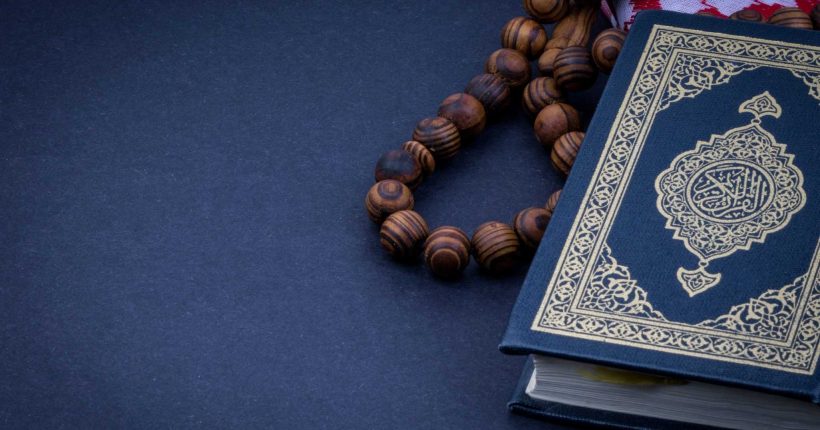Sa’i between Safa and Marwah is among the most symbolic and meaningful rituals of Hajj and Umrah. Blessed in the inspirational history of Hajar’s unwavering faith, this sacred walk ties pilgrims to a rich spiritual heritage.
In this guide, you’ll get all the information you need to perform Sa’i with sincerity, accuracy, and purpose.
What Is Sa’i Between Safa and Marwah?
Sa’i between Safa and Marwah is one of Hajj and Umrah’s most important rituals. It is the act of walking seven times between two small hills named Safa and Marwah, which are inside the Masjid al-Haram in Makkah.
It is a holy ritual that represents belief, patience, and reliance on Allah and it is compulsory for all pilgrims to finish their journey.
The Story Behind the Ritual
To appreciate fully the Sa’i between Safa and Marwah, one must know the powerful story that led to it. The ritual is rooted in the history of Hajar (peace be upon her), Prophet Ibrahim’s (AS) noble wife, and her unshakable faith in Allah in a moment of extreme despair.
When the Prophet Ibrahim (AS) left Hajar and their infant son Isma’il (AS) single-handed in the barren wasteland of Makkah, it was a command from Allah. There was not even water or food in sight, and Hajar was single-handed with her child in the burning sun.
When the infant Isma’il began to weep due to thirst, Hajar began running between Safa and Marwah hills looking for help or water. Her such desperate attempt filled with hope and faith is the same reason that we run between Safa and Marwah today.
After her seventh run between the two hills, Allah rewarded her hard work by causing the miraculous Zamzam spring to burst forth from the earth near where her infant son was.
This incredible event not only saved them from death but also became a representation of Allah’s mercy and Hajar’s unshakeable faith. The sa’i between Safa and Marwah was ultimately incorporated into Hajj and Umrah by Prophet Muhammad (peace be upon him) as a core part in honoring this moment of pure faith.
How to Perform Sa’i Between Safa and Marwah?

Sa’i between Safa and Marwah is a highly religious and formal part of Hajj and Umrah. It involves walking seven times from the two hills in Masjid al-Haram. Each set has specific starting and ending points, and the ritual has to be performed following Tawaf around the Kaaba.
1. Begin at Safa Hill
Start the Sa’i between Safa and Marwah at Safa hill which is clearly marked inside Masjid al-Haram. Approach it, turn your back towards the Kaaba, and make your intention (niyyah) to perform the Sa’i for Hajj or Umrah.
Raise your hands, praise Allah, say the Takbir (Allahu Akbar), and make personal du’a. It is recommended to recite this verse of the Qur’an:
“Indeed, Safa and Marwah are among the symbols of Allah…” (Surah Al-Baqarah 2:158)
One may also recite any individual du’a or dhikr prior to starting the first lap to Marwah.
2. Walk between Safa and Marwah (Lap 1)
Begin walking from Safa towards Marwah at a regular pace. While you walk, perform dhikr or du’a. Men have a specific spot between two green lights, that is where men are requested to run quickly to simulate the fast pace at which Hajar ran in search of water. Women should walk at a regular pace throughout.
When you reach Marwah, you have completed one round.
3. Go around Seven Laps
The Sa’i between Safa and Marwah is completed in a sum of seven laps:
From Safa to Marwah = 1 lap
From Marwah to Safa = 2 laps
And so on…
Each time you reach either Safa or Marwah, you can stop for a second to make du’a and thank Allah, just like you did at the beginning. The final lap ends at Marwah after finishing seven rounds.
4. What to Say During Sa’I
There are no specific du’as that you need to say during the Sa’i between Safa and Marwah, but you can offer personal supplications, utter “SubhanAllah,” “Alhamdulillah,” “La ilaha illallah,” or read from a du’a book if you feel comfortable. Keep your heart present and focused at all times.
Some pilgrims also utter the following between the green markers:
“Rabbighfir warham, innaka anta al-A’zz al-Akram.”
“O Lord, pardon and show mercy. Indeed, You are Most Mighty, Most Honorable.”
5. Running the Sa’i Between Safa and Marwah
After completing the seventh lap and reaching Marwah, Sa’i between Safa and Marwah is completed. Here, pilgrims performing Umrah proceed and clip or shave their hair, which finishes Umrah.
For Hajj, you proceed with the following rites based on your Hajj type (Tamattu’, Qiran, or Ifrad).
Sa’i in Hajj vs. Umrah: Key Differences

It is required that all pilgrims learn the difference between how the Sa’i between Safa and Marwah in Hajj and Umrah is performed. While the ritual is the same, background and timing are different. The key differences are illustrated in the table below:
| Aspect | Sa’i in Hajj | Sa’i in Umrah |
| Type of Pilgrimage | Performed as part of Hajj (Tamattu’, Ifrad, or Qiran) | Performed during Umrah only |
| Timing | After performing Tawaf al-Ifadah (for Ifrad & Qiran) or Tawaf al-Umrah (for Tamattu’) | Immediately after Tawaf of Umrah |
| Ihram Requirement | Performed in ihram for Tamattu’ and Qiran; may be performed out of ihram for Ifrad after sacrifice | Always performed in a state of ihram |
| Tawaf Association | Connected to the main Tawaf al-Ifadah or Tawaf al-Umrah | Connected to the only Tawaf of Umrah |
| Hair Cutting/Shaving | Done after completing sa’i and other Hajj rituals | Done immediately after completing sa’i |
| Obligatory or Sunnah | Obligatory part of Hajj rituals | Obligatory part of Umrah rituals |
| Historical Context | Honors Hajar’s effort as part of the Hajj journey to Allah | Honors Hajar’s effort during a shorter pilgrimage |
Virtues and Spiritual Benefits of Performing Sa’I

The Sa’i between Safa and Marwah is not just a physical act, it is an extremely spiritual action filled with meaning, grace, and forever worthwhile lessons. By understanding its goodness, pilgrims can perform this sacred pilgrimage with consciousness and purpose.
1. In the Footsteps of a Woman of Faith
Perhaps the most beautiful thing about the Sa’i between Safa and Marwah is that it commemorates the unbreakable belief of Hajar (peace be upon her).
Her walk back and forth between the two hills, in search of water for her little boy, is a resplendent expression of patience, determination, and absolute dependence on Allah.
Each time pilgrims perform the same walk, they pay tribute to her memory and know that sincere effort, even in despair, always proves to be rewarded by Allah.
2. A Sign of Tawakkul (Trust in Allah)
Sa’i between Safa and Marwah depicts the ideal Islamic virtue of tawakkul, believing only in Allah while simultaneously performing your own effort. Hajar did not just sit around; she walked, moved, and labored, but all of it with full trust in Allah’s mercy.
That same balanced amount of effort and trust is what every Muslim can do no more than strive for on a daily basis.
3. Renewal of a Sunnah of the Prophet (PBUH)
Performing the Sa’i between Safa and Marwah is a sunnah of the Prophet Muhammad (peace be upon him). When Sa’i is performed sincerely, one is reinstating a Sunnah and earning the reward of following the Messenger’s path, as he did perform Sa’i in his farewell pilgrimage.
4. A Reminder of Allah’s Mercy and Response
The past of the Sa’i between Safa and Marwah all comes to a powerful lesson: Allah responds to those who invoke Him from pure hearts.
Hajar’s determination and effort led to the miraculous emergence of Zamzam water, which continues to flow until today. Every step from one hill to the other reminds Muslims that nothing is ever wasted and Allah’s mercy is always available.
5. A Source of Spiritual Cleansing and Reflection
The physical action of walking up and down is also a moment for solemn reflection, du’a, and communing with Allah.
During the Sa’i between Safa and Marwah by pilgrims, their hearts are reputed to be softened, their minds cleared, and their du’as heightened.
It’s a moment to unshackle worldly distractions and remember the very purpose of life: submission and worship of Allah.
Ready to have a better understanding of Hajj and Umrah ceremonies like the Sa’i between Safa and Marwah? Join us at Tareequl Jannah Academy and learn from professional teachers who make every step of your journey significant.
Do you want to plan your first pilgrimage or enhance your knowledge? Our online courses are designed to guide you through with clarity, sincerity, and genuine Islamic teachings.
Start your learning experience today at Tareequl Jannah Academy — where sacred knowledge is met with warm guidance.




